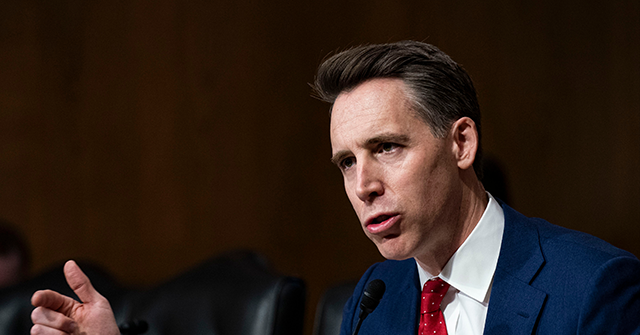Even as Europeans sought to display a united front in their support of Ukraine at a meeting of defense ministers in Brussels on Thursday, concerns are mounting that they could be left out in the cold by a Trump administration push to work with Russia to end the war.
European leaders and top officials have insisted that Ukraine must have a seat at the table as peace plans are drawn and that the process should not be rushed because that could leave the embattled nation in a place of weakness during negotiations.
But there has been a growing concern among NATO allies that the United States will take a different approach — even as it is prodding Europeans to shoulder more of the bill for whatever peace plan comes to pass.
President Trump announced on Wednesday that he had a “lengthy and highly productive phone call” with President Vladimir V. Putin of Russia. He characterized it as the beginning of a negotiation to end the war in Ukraine without mentioning a role for Europe or Ukraine’s president, Volodymyr Zelensky, with whom he had a call as well. That, paired with comments from Mr. Trump and his defense secretary painting key Ukrainian goals as unrealistic, has helped to stoke fears that the United States could fail to take European concerns into account in its push for an end to the conflict.
“There will be no credible and successful negotiations, no lasting peace, without Ukraine and without the E.U.,” said Antonio Costa, the president of the European Council, part of the European Union’s government.
“Peace cannot be a simple cease-fire,” Mr. Costa wrote in a social media post on Thursday afternoon, and “Russia must no longer be a threat to Ukraine, to Europe, to international security.”
Leaders at the NATO meeting pushed back on the idea that Ukraine and European allies were being left out of the process.
“We are intensely consulting amongst each other, including with the United States,” Mark Rutte, the NATO secretary general, said during a news conference in Brussels on Thursday afternoon following the meeting. “What we did the last 24 hours was also very much about getting to the same page.”
Mr. Rutte emphasized the NATO meeting’s areas of agreement for the United States and Europe: European spending on defense is already ramping up, he said, in line with President Trump’s demands; Ukraine’s allies are dedicated to bringing the country a durable peace; and defense production must be increased.
The U.S. defense secretary, Pete Hegseth, said that the discussions about Ukraine needed more “realism” but that the Trump administration’s tough talk was a reaction of the “realities on the ground,” rather than a concession to Mr. Putin.
“Any suggestion that President Trump is doing anything other than negotiating from a position of strength is, on its face, ahistorical and false,” Mr. Hegseth said, speaking at a news conference following the NATO meeting.
Mr. Rutte, asked about the risk that peace talks pursued now would be too hasty, said: “Even if talks start, they will not end on Day 1 or Day 2.”
Both Mr. Hegseth and Mr. Rutte stressed that Mr. Trump spoke to President Zelensky of Ukraine shortly after his call with Mr. Putin on Wednesday.
Mr. Zelensky wrote on social media after the call with Mr. Trump that the two were “charting our next steps to stop Russian aggression and ensure a lasting, reliable peace. As President Trump said, ‘Let’s get it done.’”
The European leaders are walking a challenging line, seeking to remain active partners in the quest for peace in Ukraine while dealing with the reality of Russian aggression. They are trying to give the United States signs that they are doing what Mr. Trump has asked — like spending more on defense — as they push to keep a place at the negotiating table for themselves and for Ukraine.
John Healey, Britain’s defense secretary, said after the NATO meeting, “My message in these discussions will be that there can be no negotiation about Ukraine without Ukraine, and Ukraine’s voice must be at the heart of any talks.”
Mr. Hegseth repeatedly emphasized that Mr. Trump was also a businessman and a deal maker and as such would be able to force some sort of solution. When asked at his news conference in Brussels if he could guarantee that Ukraine would not be left out of talks, and whether Europe would be involved, Mr. Hegseth said, “That’s not ultimately my decision.”
He added that any negotiations would be pursued with “both” Mr. Putin and Mr. Zelensky. And he reiterated Mr. Trump’s stance that while European nations and NATO allies needed to spend more on their own defense, the White House stood behind the alliance.
At the White House in the afternoon, Mr. Trump, asked by a reporter about whether Ukraine would be part of the negotiations with Russia, replied: “Of course they would. I mean, they’re part of it. We would have Ukraine, we would have Russia and we would have other people involved, too.”
He said that Mr. Trump wanted to “make NATO great again,” and that “anyone that suggests its abandonment are trying to drive a wedge between allies that does not exist.”
Notably, Mr. Hegseth said that Mr. Putin “took aggression” on Ukraine, something he omitted in speaking of the conflict to the Pentagon’s work force on Feb. 7, two weeks after being sworn in as defense secretary.
Mr. Hegseth also touched on a comment he made Wednesday at the opening of the Ukraine Defense Contact Group, an alliance of more than 40 NATO and non-NATO countries, in which he called one of Ukraine’s central demands — a return to its pre-2014 borders — “an unrealistic objective.” The comment appeared to signal a willingness, even before negotiations began, to allow Russia to claim areas its forces seized and occupied in the last decade: first Crimea and then the Donbas region of eastern Ukraine. He said that the comment was “simply pointing out realism.”
Mr. Hegseth said the United States would continue to send Kyiv military aid that had already been allocated under the Biden administration but signaled that Mr. Trump would use the possibility of additional aid as a negotiating tool.
“I think it would be fair to say that things like future funding, either less or more, could be on the table in negotiations as well,” he explained, adding that it would be “whatever the president determines is the most robust carrot or stick on either side to induce a durable peace.”
According to data compiled by The New York Times, the United States has provided Ukraine $67 billion in aid since Russia’s full-scale invasion in February of 2022, roughly half in shipments of weaponry from the Pentagon’s existing stockpile and half in funds to allow Ukraine to buy military hardware directly from the U.S. defense industry.
Throughout the Biden administration, the average time between shipments from the Pentagon stockpiles was two weeks, even taking into account a 76-day halt in aid forced by House Speaker Mike Johnson between December 2023 and March 2024. The average time between announcements of funding aid under President Biden was 44 days. But the last of any U.S. aid to Ukraine was announced 35 days ago, before Mr. Trump took office.
The post NATO Emphasizes Unity as Concerns Mount That Europe Will Be Left Out of Ukraine Talks appeared first on New York Times.




